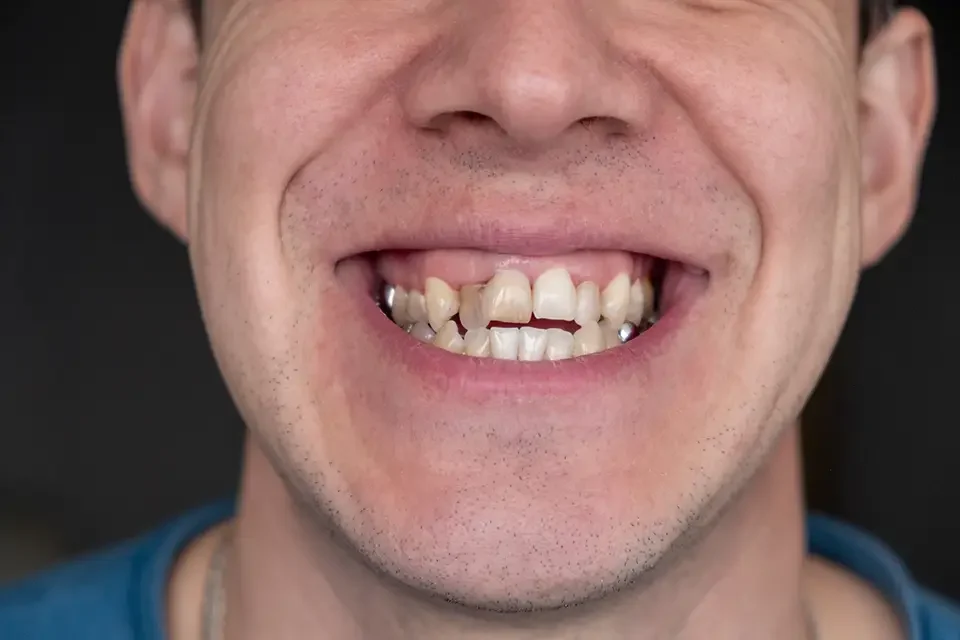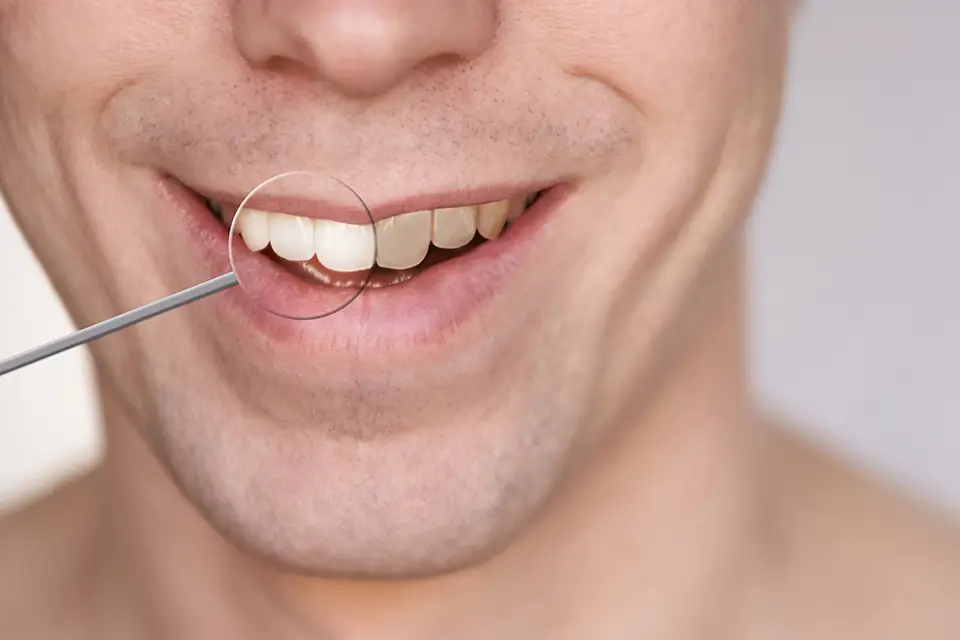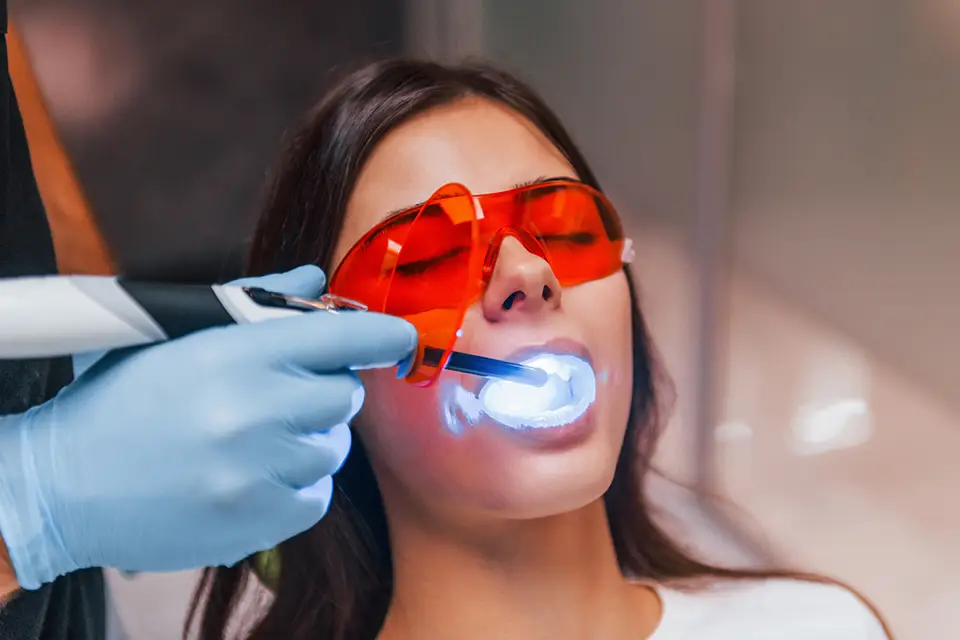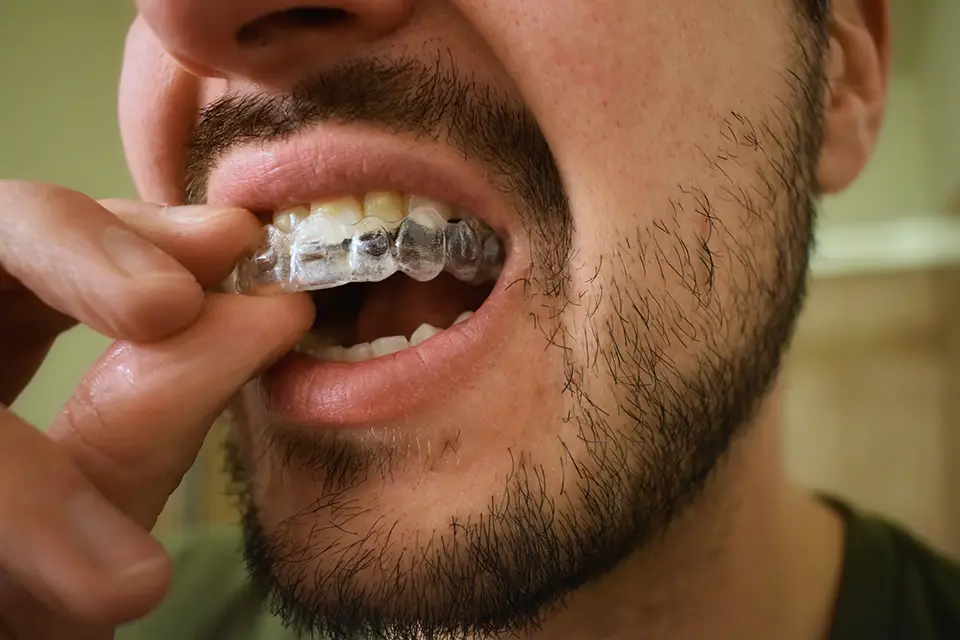Noticing a single tooth that looks darker than the rest can be unsettling. You might jump to teeth whitening as the fix, but the real question to ask is: “Why do I have one dark tooth?” Colour changes often point to something happening inside the tooth or along the gumline—not just surface stains. At Sunshine Dentistry in Richmond Hill, we start with a careful exam to determine the “why,” then match treatment to the cause. By understanding “Why do I have one dark tooth?” first, you avoid guesswork and choose a solution that actually lasts.
"Why Do I Have One Dark Tooth?" Primary Reasons We See Most
A single dark tooth usually signals a localized issue. Common culprits include:
- Pulpal Changes After Trauma:
- A bump to the mouth (even years ago) can bruise the internal tooth tissue. Over time, the pulp can calcify or die, which darkens the tooth from the inside.
- Previous Root Canal With Internal Staining:
- A well-treated tooth may slowly discolour due to remnants of blood pigments or older materials left within the chamber.
- Deep Internal Stains (Tetracycline/Developmental):
- Less common in just one tooth, but certain medications or enamel/dentin formation issues can selectively affect a single tooth.
- Large, Aging Restorations:
- Old metal posts or leaky fillings can “shadow” through enamel, making one tooth look darker.
- Cervical Lesions or Recession:
- Exposed root surfaces at the gumline pick up stain and look darker than crown enamel.
- Tooth Decay:
- When decay undermines enamel, the tooth may appear brown-grey in one area, especially near the margins of old fillings.
Each of these is a different answer to “Why do I have one dark tooth?”—and each needs a tailored plan.
Exam First: How We Find the Real Cause
Before treatment, we diagnose. That’s how we keep your results natural and durable.
- Detailed History & Palpation:
- Any history of sports injury, grinding, or past dental work helps explain “Why do I have one dark tooth?” Physical checks can reveal subtle tenderness or gum changes.
- Vitality & Sensibility Testing:
- We test nerve response. A non-vital or inflamed pulp shifts the plan toward endodontic (root canal) care or internal bleaching.
- Radiographs & Imaging:
- X-rays show hidden decay, posts, internal calcifications, and bone levels. If “Why do I have one dark tooth?” points to internal causes, images confirm next steps.
- Shade Mapping:
- We record hue, chroma, and value across the tooth so the final restoration blends with its neighbours.
If Trauma Is the Answer to "Why Do I Have One Dark Tooth?"
A trauma-darkened tooth often means the nerve has died or is calcifying:
- Non-Vital Tooth (Pulp Death):
- If testing suggests the tooth is non-vital, root canal therapy treats infection risk and stabilizes the tooth. After that, internal bleaching or a ceramic veneer/crown restores the colour.
- Calcific Metamorphosis:
- The tooth may be alive but darker due to internal hard tissue changes. Sometimes internal bleaching still works; in others, a facial veneer provides a consistent shade.
Here, the root cause of “Why do I have one dark tooth?” determines whether we start inside the tooth or on its surface.

If a Previous Root Canal Is the Reason
For a tooth that had endodontic treatment years ago:
- Internal Bleaching (Walking Bleach Technique):
- We place a whitening agent inside the chamber for several days, replace it as needed, and seal the access once the ideal shade returns.
- Refinement With a Veneer or Crown:
- When internal bleaching doesn’t fully resolve “Why do I have one dark tooth?”, a porcelain veneer or ceramic crown completes the colour match and shape.
- Check the Seal:
- We evaluate margins and core materials; replacing stained or metal-containing cores can help the final shade look natural.
"Why Do I Have One Dark Tooth?: When Old Restorations or Decay Make One Tooth Dark
If the answer to “Why do I have one dark tooth?” is a leaking border or deep decay:
- Remove & Replace:
- We eliminate stained or failing material, restore with modern composites or ceramic, and re-establish proper light transmission.
- Cervical Staining:
- For recession-related dark bands, we may recommend micro-abrasion, bonding, or a thin ceramic veneer to even the colour.
- Full-Coverage When Needed:
- If structure is compromised, a ceramic crown restores both shade and strength.
Can Professional Whitening Fix One Dark Tooth?
Sometimes. But conventional external teeth whitening lightens all teeth together. If one tooth is intrinsically darker, external whitening may highlight the mismatch. In those cases:
- Internal Bleaching First:
- Lighten the dark tooth from the inside, then use teeth whitening to tune the overall shade.
- Targeted Bonding or Veneer:
- If “Why do I have one dark tooth?” traces to thin enamel or defects, a conservative veneer or bonding can correct colour and shape precisely.
The goal is harmony—so the dark tooth blends with neighbours, not brighter or greyer than the rest.
"Why Do I Have One Dark Tooth?: Cosmetic Options That Blend Seamlessly
When biology is stable and you simply want the colour corrected:
- Direct Composite Bonding:
- A same-day, minimally invasive way to mask localized darkness. Modern composites layer translucencies for lifelike results.
- Porcelain Veneer:
- Ultra-thin ceramic that covers the front surface with durable colour stability—ideal when “Why do I have one dark tooth?” is tied to intrinsic discoloration.
- All-Ceramic Crown:
- Chosen when the tooth also needs structural reinforcement due to cracks, wear, or large old fillings.
We select the conservative option that achieves a long-lasting match.
Prevention: Keep a Corrected Tooth Looking Great
Once we’ve solved “Why do I have one dark tooth?”, keep the result steady:
- Nightguard if You Clench:
- Protects enamel, restorations, and gumline.
- Mind Stain-Heavy Diets:
- Rinse with water after coffee, tea, red wine, or curry to minimize new surface staining.
- Regular Hygiene & Checks:
- Cleanings reduce plaque pigments; routine exams allow early fixes before colour shifts return.

Costs: Why They Vary
Because “Why do I have one dark tooth?” can stem from many causes, fees depend on the path:
- Diagnostic Workup: Exam, X-rays, and tests guide an accurate plan.
- Endodontic Needs: Root canal plus internal bleaching differs in cost from simple bonding.
- Restorative Choice: Composite bonding is typically more affordable; porcelain veneers and crowns cost more but offer superior longevity and colour stability.
- Shade Matching Time: Custom layering and lab customization add appointment time—and quality.
You’ll receive an itemized plan so you know what you’re paying for and why.
Ready for a Tooth-By-Tooth Plan?
If you’ve been asking, “Why do I have one dark tooth?”, the best next step is a focused assessment. At Sunshine Dentistry in Richmond Hill, we identify the cause, explain options in plain language, and match treatment to your timeline, budget, and goals. Book a visit, bring your questions, and leave with a plan to make every tooth look like it belongs.
FAQs: "Why Do I Have One Dark Tooth?"
Can a dark tooth be healthy?
Sometimes, yes. Calcification after old trauma can darken a tooth that’s still vital. We test the nerve to confirm health before recommending cosmetics.
Will over-the-counter whitening fix just one tooth?
Usually not. Store kits lighten everything equally and can exaggerate the contrast. If “Why do I have one dark tooth?” is the issue, internal bleaching, bonding, or a veneer is more precise.
How fast can the colour be corrected?
Direct bonding can be same-day. Internal bleaching often takes a few short visits. Veneers/crowns require planning and a lab phase but offer stable, lifelike shade.
Could the darkness mean infection?
It can. That’s why testing matters. If the pulp is infected or dead, we treat the biology first, then restore the colour.



